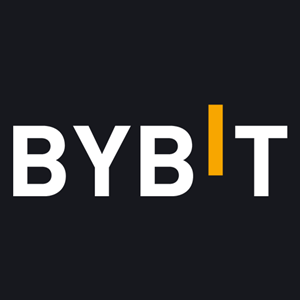Real-World Asset (RWA) Tokenization in 2025: The Next Billion-Dollar Crypto Trend September, 2025
Real-world asset (RWA) tokenization is redefining blockchain by bringing real estate, treasuries, and private credit on-chain. In 2025, it will be more than a trend, it will be the infrastructure layer connecting traditional finance with Web3.
 Written by Nikolas Sargeant
Written by Nikolas Sargeant
| Avgifter | Insättningsalternativ | |||||||||
|---|---|---|---|---|---|---|---|---|---|---|
| Namn | Kryptos | Taker | Maker | Uttag | Banköverföring | Kreditkort | Trading API | Grundades år | Offer | |

Bybit
Contract Trading Exchanges
|
182 | 0.06% | 0.01% | 0.0005 | 2018 |
FÅ UPP TILL 600 USD I BONUS!
|
Besök | |||

Binance
Centralized Exchanges
|
431 | 0.10% | 0.10% | 0.0002 | 2017 |
FÅ UPP TILL USD 100 I VÄLKOMSTBONUS
|
Besök | |||
|
Phemex
Contract Trading Exchanges
|
150 | 0.06% | 0.01% | 0.0004 | 2019 |
FÅ UPP TILL 180 USD I INSÄTTNINGSBONUS
|
Besök | |||

Gate.io
Centralized Exchanges
|
512 | 0.20% | 0.20% | 0.0005 | 2017 |
GET A $100 WELCOME BONUS
|
Besök | |||

Coinbase
Centralized Exchanges
|
136 | 2.00% | 2.00% | 0.000079 | 2012 |
FÅ 5 USD I VÄLKOMSTBONUS
|
Besök | |||
2. What is Real-World Asset (RWA) Tokenization?
How It Works: The Mechanics Behind Tokenization
The tokenization process typically includes several steps:
Key Features of Tokenized RWAs:
3. The Benefits of RWA Tokenization
Tokenizing real-world assets isn’t just a technical improvement—it’s a fundamental shift in how financial markets can function. By leveraging blockchain infrastructure, RWA tokenization unlocks a wide range of benefits for institutions, retail investors, and asset issuers.
1. Liquidity for Traditionally Illiquid Markets
Assets like real estate, fine art, or private credit have historically been difficult to buy and sell quickly. Tokenization changes that. By turning ownership rights into digital tokens, it enables much faster and more flexible transactions—potentially within minutes, and outside of traditional market hours.
2. Fractional Ownership for Retail Investors
Tokenization breaks down high-value assets into smaller, affordable units. This gives everyday investors access to asset classes that were previously reserved for institutions or high-net-worth individuals, such as prime real estate, private debt, or collectibles.
3. 24/7 Markets and Near-Instant Settlement
Unlike traditional financial systems that are limited by banking hours and settlement delays, blockchain-based assets can be traded globally at any time. Smart contracts ensure that transactions are executed and settled almost instantly, with less need for third-party clearinghouses.
4. Reduced Costs Through Automation
Smart contracts automate many administrative tasks, such as compliance checks, dividend payouts, and asset transfers, cutting down on labor and intermediary fees. This can lead to more efficient capital markets and higher returns for investors.

5. Global Access and Composability
With only a crypto wallet and an internet connection (assuming legal eligibility), investors can access tokenized assets from anywhere in the world. Additionally, tokenized RWAs can be integrated into DeFi platforms, allowing them to be used as collateral, staked, or pooled in yield-generating protocols.
|
Feature |
Traditional Assets |
Tokenized Assets |
|
Market Hours |
Limited (weekdays only) |
24/7 |
|
Settlement Time |
Days or weeks |
Seconds to minutes |
|
Minimum Investment |
Often high (>$10K) |
As low as $10 |
|
Geographic Access |
Restricted |
Global (where compliant) |
|
Liquidity |
Low |
Higher (via on-chain trading) |
|
Intermediary Fees |
Multiple layers |
Reduced via smart contracts |
These benefits are already proving valuable across multiple industries—and they’re setting the stage for a more open, efficient, and accessible financial system.
4. Use Cases in 2025: Who’s Tokenizing What?
Now that we’ve covered the benefits, let’s look at where tokenization is actually happening in 2025. From real estate to government bonds, the number of live, real-world applications is growing fast.

Tokenized Real Estate: Ownership and Income Streams
Platforms: RealT, Landshare
Real estate tokenization allows investors to buy fractional ownership in income-producing properties. For example, RealT tokenizes U.S. rental properties, enabling investors to receive daily rent payouts in stablecoins. Landshare offers similar functionality, combining property-backed tokens with DeFi staking mechanics.
Use case: A $150,000 duplex in Detroit might be split into 50,000 tokens. Investors worldwide can buy a few tokens and automatically receive their portion of the rental income.
Tokenized Bonds and Treasuries: Institutional-Grade Yield
Examples: Franklin Templeton, Ondo Finance, Backed.fi
Franklin Templeton’s tokenized U.S. Government Money Fund allows investors to access treasuries directly via the blockchain. Ondo Finance offers tokenized short-term treasuries and corporate bonds that can be traded, used in DeFi, or held for passive yield. These products are especially appealing to DAOs and on-chain treasuries looking for low-risk, yield-bearing assets.
Tokenized Commodities: Blockchain-Based Gold and Silver
Examples: Paxos Gold (PAXG), Tether Gold (XAUT)
Tokenized gold products like PAXG represent direct ownership of physical bullion stored in secure vaults. Investors gain the benefits of gold exposure without the logistical challenges of storage or custody. These tokens can also be traded in crypto markets or used in DeFi for yield generation.
Tokenized Fine Art and Luxury Goods
Examples: Masterworks, 4K
Masterworks allows fractional ownership of blue-chip artwork, offering investors exposure to art market appreciation. Meanwhile, 4K is pioneering luxury asset tokenization by offering NFTs backed by authenticated physical goods such as high-end watches, sneakers, or handbags, all held in insured vaults.
Private Credit and Invoices
Examples: Centrifuge, Maple Finance

Businesses can tokenize invoice receivables or credit obligations to raise liquidity in DeFi markets. Centrifuge facilitates tokenization of real-world debt, connecting borrowers with stablecoin lenders. Maple Finance supports undercollateralized lending to crypto-native businesses based on their revenue and credit profiles.
Tokenized RWAs as DeFi Collateral
Major DeFi platforms such as MakerDAO and Aave are beginning to accept tokenized real-world assets as collateral. This brings traditional asset stability into decentralized finance, supporting more sustainable on-chain lending and borrowing ecosystems.
These use cases make it clear: tokenization is not just theoretical. It’s happening across sectors, unlocking new capital flows and redefining what blockchain can do in real-world finance.
5. Top Protocols and Platforms Leading the RWA Movement
In 2025, the RWA sector has moved beyond theory into full-scale execution. Multiple protocols now serve as the backbone of this new financial layer, offering access to tokenized real estate, bonds, credit, and more. Below are some of the standout platforms shaping the future of tokenized assets.
Centrifuge – Pioneering Tokenized Credit
Centrifuge is one of the first platforms to bring off-chain credit into DeFi. It enables businesses to tokenize real-world assets like invoices or revenue streams and use them as collateral for on-chain borrowing.
- Volume: Over $300 million in real-world asset financing since inception
- Supported Assets: Invoices, trade finance, consumer loans
- Unique Feature: Decentralized credit scoring through Tinlake pools
- Use Case: SME borrowing with DeFi liquidity.

Ondo Finance – Tokenized U.S. Treasuries for DeFi
Ondo provides tokenized exposure to short-term treasuries and money market funds. Their products are optimized for use within DeFi protocols, allowing DAOs and investors to park stable capital into low-risk, yield-generating instruments.
- Volume: $200M+ in total value tokenized
- Supported Assets: U.S. Treasuries, corporate bonds
- Unique Feature: Compliant wrapper around off-chain funds for DeFi-native usage
- Use Case: On-chain treasuries for DAOs and crypto firms
Polymesh – Purpose-Built Blockchain for Regulated Assets
Polymesh is a layer-1 blockchain designed specifically for security tokens and compliant financial instruments. Unlike general-purpose chains, it includes built-in identity, compliance, and governance features.
- User Base: Institutional issuers and asset managers
- Supported Assets: Tokenized equities, bonds, funds
- Unique Feature: Permissioned infrastructure for compliance-first issuance
- Use Case: Institutions seeking end-to-end regulatory alignment on-chain
Backed Finance – Tokenized Public Securities
Backed issues tokenized versions of publicly traded securities (e.g., ETFs, corporate bonds) that can be held and traded by crypto users under specific regulatory frameworks (like Swiss DLT laws).
- Supported Assets: S&P 500 ETFs, corporate debt instruments
- Unique Feature: Fully collateralized tokens mirroring real securities
- Use Case: Crypto-native exposure to traditional financial products
RealT – Fractional Tokenized Real Estate
RealT allows users to invest in fractional shares of U.S.-based rental properties and receive daily payouts in stablecoins. The platform simplifies property ownership and income distribution via blockchain.
- Properties Tokenized: 250+
- Supported Assets: Residential and commercial real estate
- Unique Feature: Stablecoin-based rental yield distribution
- Use Case: Global real estate investment with low capital barrier

Securitize – Reg-Compliant Securities Infrastructure
Securitize is a leading platform for issuing and managing tokenized securities. It offers end-to-end solutions for compliance, investor onboarding, and secondary trading—especially for institutional clients.
- Clients: BlackRock, Hamilton Lane
- Supported Assets: Private equity, venture funds, alternative investments
- Unique Feature: Integrated KYC/AML, transfer agent, and compliance tools
- Use Case: Institutional-grade tokenization for funds and private markets
Avalanche & Ethereum L2s – Scalable Infrastructure
Scalable infrastructure is critical for RWAs. Avalanche supports custom Subnets tailored to regulated environments, while Ethereum Layer 2s (like Arbitrum and Base) offer low-fee, high-speed environments for RWA tokens to function effectively.
- Key Features: Low fees, fast finality, customizable compliance environments
- Use Case: Hosting DeFi-native RWA protocols and institutional tokenization platforms
Together, these platforms represent the emerging architecture of tokenized finance, bridging TradFi with DeFi, and setting the foundation for billions in real-world assets to move on-chain.
6. RWA Tokenization vs NFTs vs Security Tokens
As blockchain matures, the lines between different types of digital assets can blur. Many ask how RWA tokens differ from NFTs or traditional security tokens? Here's a clear breakdown:
|
Feature |
RWA Token |
NFT |
Security Token |
|
Backed by Asset? |
✅ Yes |
❌ (usually not) |
✅ Yes |
|
Fungible? |
✅ Yes |
❌ Unique by design |
✅ Yes |
|
Regulatory Scrutiny |
High |
Medium |
Very High |
|
Example |
Tokenized real estate |
Profile picture JPEG |
Tokenized equity share |
- RWA Tokens are typically fungible (ERC-20 standard) and represent a direct claim to an off-chain asset (like real estate or treasury bonds). They often require legal structuring and custodianship to stay compliant.
- NFTs (Non-Fungible Tokens) are unique tokens (ERC-721 or ERC-1155) representing one-of-one items. While they can be tied to real-world goods, they are more commonly used for art, collectibles, and gaming assets.
- Security Tokens are a subset of tokenized assets that legally represent ownership in a company, debt instrument, or fund. These are subject to stringent securities regulations and often require qualified investor status.

In practice, there is overlap. Many RWA tokens are securities, and some NFTs can represent real assets. However, understanding these distinctions helps navigate the legal and functional differences that define each asset class.
7. Risks and Challenges
While the potential of RWA tokenization is enormous, it's important to recognize the challenges involved. This isn’t just another crypto narrative—it intersects with complex legal, technical, and market dynamics.
Custodianship and Trust
Token holders rarely hold the physical asset directly. Instead, assets are typically held by a custodian or in an SPV (special purpose vehicle). Trust in these custodians and the legal structures underpinning them is critical.
Price Oracles and Data Feeds
Blockchain doesn’t natively “know” the value of real-world assets. Oracles must supply off-chain pricing data, and if these feeds are manipulated or inaccurate, token valuations can break down—especially in DeFi use cases.
Regulatory Hurdles
Many tokenized RWAs fall into the category of securities, triggering strict compliance obligations. Jurisdictional differences can also complicate offerings, with what’s legal in Switzerland potentially restricted in the U.S. or Asia.

Liquidity Risk
RWA markets are still early. While tokenization enables fractional trading, demand is still growing, and many tokens can remain illiquid or volatile in thin markets.
Technology and Smart Contract Risk
Bugs or exploits in smart contracts can lead to loss of funds, downtime, or frozen assets. Even reputable platforms must undergo regular audits and updates to ensure security.
What to Watch For: RWA Investor Checklist
- Does the platform disclose legal ownership structures (SPVs, custodians)?
- Are the assets verified and periodically audited?
- Is the token compliant with local securities laws?
- Is there real liquidity or a secondary market?
- Are smart contracts open-source and audited?
- Are oracles and pricing mechanisms clearly explained?
Informed investors need to look past the hype and assess with the same due diligence they would apply to any high-stakes investment.
8. How to Invest in Tokenized RWAs Today
Getting started with RWA investing in 2025 is easier than ever, but choosing the right platform is essential. Here’s how to approach it:
- Open an Account on a Reputable Platform — Start with regulated, user-friendly portals like RealT (real estate), Ondo Finance (tokenized treasuries), or Securitize (institutional securities). These platforms offer onboarding, compliance checks, and access to asset details.
- Explore RWA-Integrated DeFi Protocols — Protocols like MakerDAO, Aave, and Centrifuge integrate RWA collateral into their lending systems. You can earn passive income through stablecoin vaults or liquidity pools backed by real-world yields.
- Do Your Homework — Check for platform licenses, asset audits, third-party custodianship, and transparency in token economics. Regulatory compliance should not be a side note—it’s central to trust.
- Use Discovery Tools and Dashboards — Sites like DeFiLlama or RWA.xyz offer live data on tokenized asset volumes, yields, and adoption. Stay updated on trends and new listings through these tracking platforms.

9. Conclusion: RWA Tokenization and the Path to Mass Adoption
Real-world asset tokenization is emerging as one of the most credible use cases for blockchain in 2025. It’s not about hype—it’s about unlocking liquidity, improving accessibility, and modernizing financial infrastructure. From real estate to treasuries, assets that were once difficult to trade are becoming digitally native and globally accessible.
While regulatory and technical challenges remain, the pace of adoption is accelerating as major institutions and DeFi protocols converge. For investors and builders alike, RWA tokenization offers a clear path forward, bridging traditional finance with Web3 in a practical and transformative way.
| Avgifter | Insättningsalternativ | |||||||||
|---|---|---|---|---|---|---|---|---|---|---|
| Namn | Kryptos | Taker | Maker | Uttag | Banköverföring | Kreditkort | Trading API | Grundades år | Offer | |

Bybit
Contract Trading Exchanges
|
182 | 0.06% | 0.01% | 0.0005 | 2018 |
FÅ UPP TILL 600 USD I BONUS!
|
Besök | |||

Binance
Centralized Exchanges
|
431 | 0.10% | 0.10% | 0.0002 | 2017 |
FÅ UPP TILL USD 100 I VÄLKOMSTBONUS
|
Besök | |||
|
Phemex
Contract Trading Exchanges
|
150 | 0.06% | 0.01% | 0.0004 | 2019 |
FÅ UPP TILL 180 USD I INSÄTTNINGSBONUS
|
Besök | |||

Gate.io
Centralized Exchanges
|
512 | 0.20% | 0.20% | 0.0005 | 2017 |
GET A $100 WELCOME BONUS
|
Besök | |||

Coinbase
Centralized Exchanges
|
136 | 2.00% | 2.00% | 0.000079 | 2012 |
FÅ 5 USD I VÄLKOMSTBONUS
|
Besök | |||



